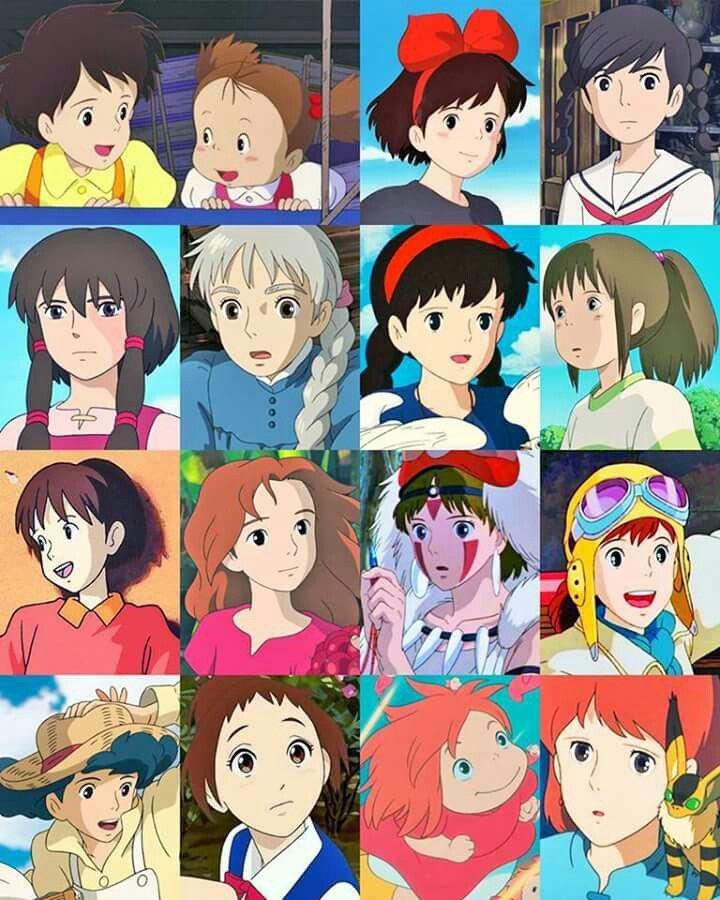
As I reflect on Miyazaki’s works, it strikes me how deliberately he crafts his feminine characters to embody a unique kind of spirituality. It’s not the overt, ritualistic spirituality tied to religion but a quiet, intrinsic connection to the world around them and their inner growth. Three examples stand out to me: Howl’s Moving Castle, Kiki’s Delivery Service, and Princess Mononoke. In these films, the female protagonists—Sophie, Kiki, and San—navigate challenges that are less about external battles and more about discovering and embracing their own strength, all while maintaining a profound connection to their environments and themselves.
Sophie’s journey in Howl’s Moving Castle begins with her transformation into an old woman, which initially feels like a curse but becomes a catalyst for her self-discovery. Her spirituality is subtle yet deeply woven into her arc. She learns to see beauty in imperfection, both in herself and in Howl’s chaotic world. Unlike traditional heroines who might rely on physical prowess, Sophie’s growth is emotional and empathetic. She becomes the grounding force in the moving castle, healing Howl and others with her steadfastness and compassion. This spiritual resilience is what ultimately breaks the curse—an act of inner transformation as much as an external one. Miyazaki portrays Sophie as someone whose spirit transcends the physical, a quality that feels deeply aligned with a universal, human spirituality.
Kiki’s story in Kiki’s Delivery Service offers a different but equally compelling portrayal. As a young witch-in-training, Kiki’s spiritual journey is one of independence and self-worth. Her ability to fly—a physical manifestation of her connection to her magic—wavers as she begins to doubt herself. But Miyazaki doesn’t frame this loss as mere failure; it’s a necessary step in Kiki’s spiritual growth. Her eventual recovery comes not through force or external validation but through reconnecting with her passions and her identity. It’s a reminder that spirituality can be found in the everyday—in baking bread, making deliveries, and forging genuine friendships. Kiki’s story suggests that spirituality is not about extraordinary rituals but about the profound grace of being present and true to oneself.
San, from Princess Mononoke, adds a new layer to this exploration of spirituality. Her connection to the natural world is fierce and primal, yet it reflects a profound spiritual bond with the forest and its creatures. San’s spirituality is rooted in action, defiance, and a deep-seated love for the environment that nurtured her. Raised by wolves, she rejects the human world that she perceives as destructive, but through her encounters with Ashitaka, she learns to navigate the complex intersection of humanity and nature. Her journey is one of reconciliation—between her identity as a human and her loyalty to the forest spirits. San’s spirituality is raw and untamed, but it embodies a sacred reverence for life and balance. Her fierce love for the forest reminds us of the spiritual connection we, too, can have with the earth if we choose to honor and protect it.
In all three films, Miyazaki’s women are spiritual not because they adhere to a specific doctrine but because they embody a connection to their inner selves and the natural world. Their growth feels sacred, even in its quietness or ferocity. Watching Sophie, Kiki, and San, I’m reminded that spirituality doesn’t always look like meditation or prayer. It can be the courage to embrace who we are, the resilience to weather life’s storms, and the compassion to extend that grace to others. It can also be a raw, untamed devotion to the earth and the life it sustains. It’s this multifaceted spirituality that feels most authentic and universal, and Miyazaki captures it beautifully through his feminine protagonists.